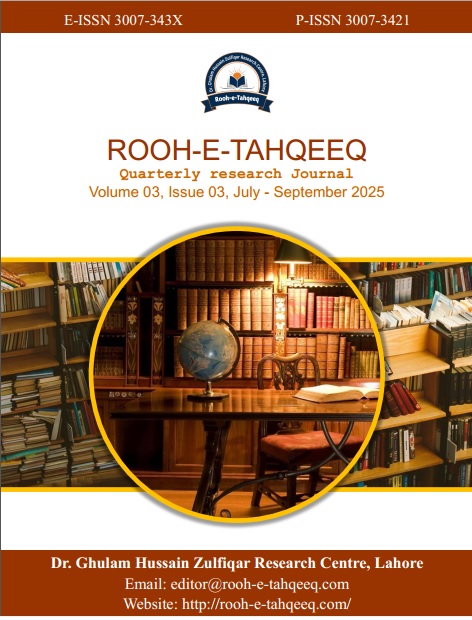Mahatma Gandhi's Concept of Interreligious Tolerance(An Analytical Study)
مہاتما كاتصور بین المذاہب رواداری: ایك تحقیقی جائزہ
Keywords:
Mahatma Gandhi, Concept of Religious Tolerance, Interfaith Harmony, Religious Tolerance, Peaceful Coexistence, NonviolenceAbstract
This research article explores Mahatma Gandhi’s philosophy of interfaith harmony, emphasizing his vision of religious tolerance as a foundation for peaceful coexistence. Recognized globally as a symbol of nonviolence and truth, Gandhi believed that all religions stem from a common moral and spiritual foundation—truth and nonviolence. Through an analytical and critical approach, this study examines how Gandhi implemented the idea of interfaith tolerance in a religiously plural society like India, and what challenges he encountered in this pursuit. The article also contextualizes the concept of tolerance within Islamic teachings, highlighting verses from the Qur'an and examples from the Prophet Muhammad's (PBUH) life that promote peaceful interreligious relations. In addition, the study reviews contemporary global and South Asian literature on interfaith dialogue, referencing scholars like John Hick, Hans Küng, and Dr. Mahmood Ahmed Ghazi. The findings suggest that Gandhi’s model of “Sarva Dharma Sambhava” (equal respect for all religions) is a timeless principle that can guide modern societies toward interreligious understanding, national unity, and global peace. The study recommends including such teachings in educational curricula and community programs to build a more tolerant and inclusive world.













